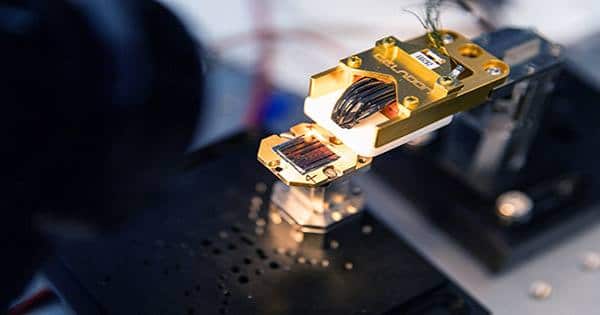Researchers have created a scalable quantum computing platform that has shrunk to the size of a penny, which will serve as the basis for a quantum computer that can achieve quantum speeds using far fewer devices than the current design. Over the past few years, quantum computing science has moved from fiction to a real technology that could see use in the next few decades. Although quantum teleportation and even quantum computer chips have appeared before, the technology is still far from seen in real-world use.
The concept behind quantum computing is relatively simple. Conventional computers process information and communicate via bits, which exist in binary: they are either zero or one. Quantum computers process information in qubits, which can be zero, one, or both at the same time.
Except, why to stop there – they use quantum mode (called commode) using all the variables from zero to one. Another advantage of quantum computers is that they do not necessarily perform operations in the same order as conventional computers. For example, if you want to know how many reasons the number 600 has, a current computer will systematically go through each number and see that it can multiply by 600. A quantum computer will do each number at the same time.
To do this, it needs to be able to make a lot of commodes. In their new study, Xu Yi and colleagues at the University of Virginia employed the use of light, a field known as quantum photonics.
Much like optical fiber, quantum photonics uses full spectral multiplexing of light to carry information, each wave of light becoming a potential quantum unit. The team developed a device called a micro comb, which converts photons of light into single to multiple wavelengths. These photons are sent around a ring, which produces optical power (the amount of energy per unit time in the device) and increases the likelihood that the photons interact with each other, creating a quantum entanglement.
Yi said in a statement, “We assume that when we optimize the system, we can create thousands of commodes from a single device.” They put the device on a small chip, much like a standard computer chip, and were able to make generate 40 commodes from a single device – although they believed there could be more produced that was not picked up by measuring instruments. Yi and the team believe that by using multiplexing nodes on Quantum computers and optimizing equipment, they will be able to produce more than 40.
















